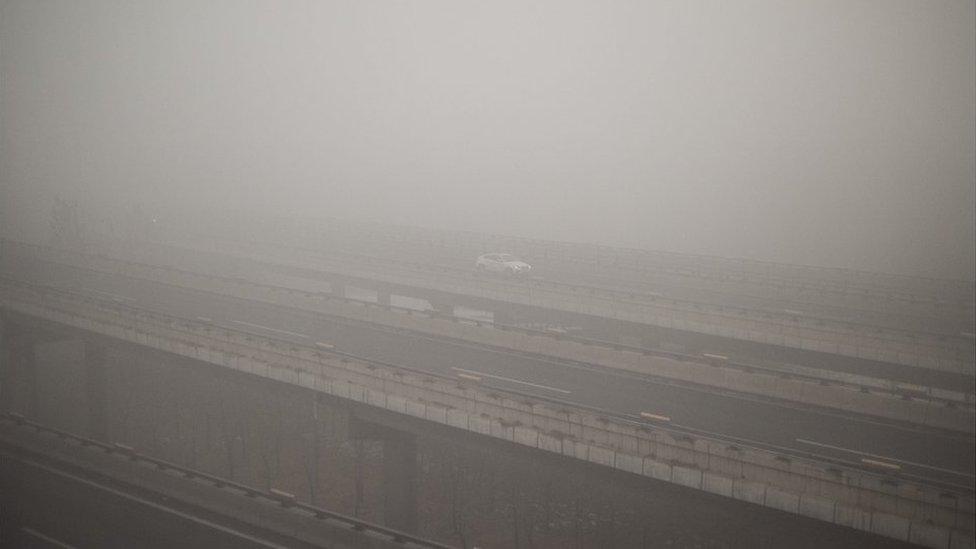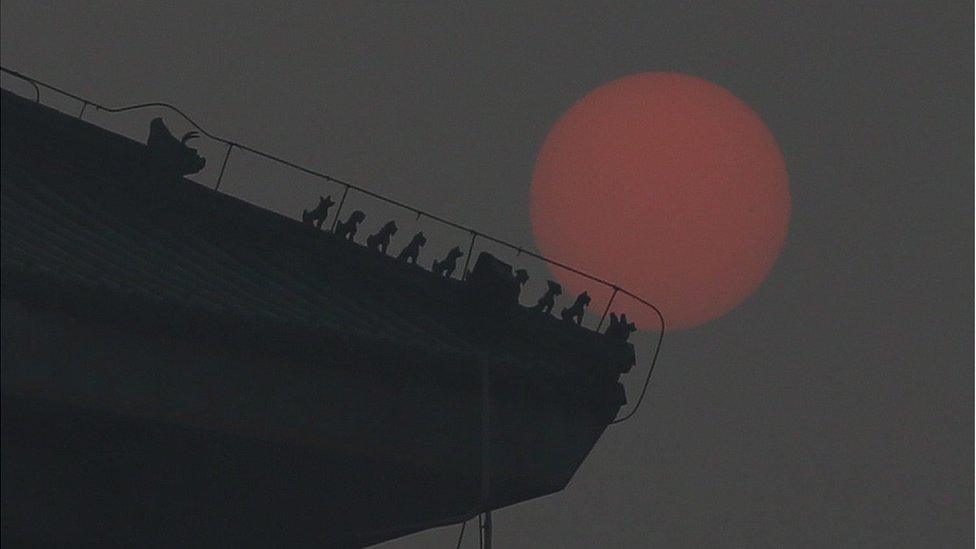Beijing smog drivers face fines for breaking car rules
- Published

A car drives through heavy smog in Beijing
Beijing drivers could face a total of $1.6m (£1m) in fines for breaking driving restrictions during the city's pollution red alert, Chinese media say.
Restrictions during the alert meant cars could only be driven on alternate days, depending on whether its number plate ended in an odd or even number.
Statistics showed about 112,800 vehicles violated the rule - in just four days - newspaper Beijing News and state broadcaster CCTV said.
The most recent alert ended on Tuesday.
The penalty for driving on the wrong day is 100 yuan ($15; £10) for every three hours on the road.

Even the sun appeared shrouded in the haze
The four-day alert was part of government efforts to address often dangerous levels of pollution in Beijing.
It was only the second red alert - the highest of four tiers of air pollution warnings - ever issued for the city, with the first coming earlier in December.
The four-day alerts trigger restrictions on factory and construction work, and barbecues, among other things.
The authorities had been criticised in the past for rarely issuing pollution warnings, despite facing several bouts of serious pollution. The current alert system started two years ago.
Car use is high in Beijing - of 5.6 million registered cars, buses and taxis in the capital, 4.3 million are private cars.

Long-term exposure to high levels of PM2.5 - a type of pollution involving fine particles less than 2.5 microns (0.0025mm) in diameter - has been linked to lung damage and respiratory illnesses.
The World Health Organization (WHO) considers PM2.5 readings of 25 micrograms per cubic metre as the maximum safe level. During the recent red alert, pollution peaked at 508 on Tuesday, according to the US Embassy's air pollution monitoring, external service in Beijing.
The US monitoring service describes that level as "beyond index" - one level above "hazardous", which stops at 500.
Coal-powered industries and heating systems - in heavy use during the cold Beijing winter - are major contributors to the pollution.
The air quality is often made worse by weather conditions and the city's geography - Beijing is bordered to the south and east by polluting industrial areas, and to the north and west by mountains that trap the dirty air over the city.

- Published18 December 2015

- Published7 December 2015

- Published11 December 2015

- Published3 February 2015

- Published2 March 2015

- Published7 December 2015
